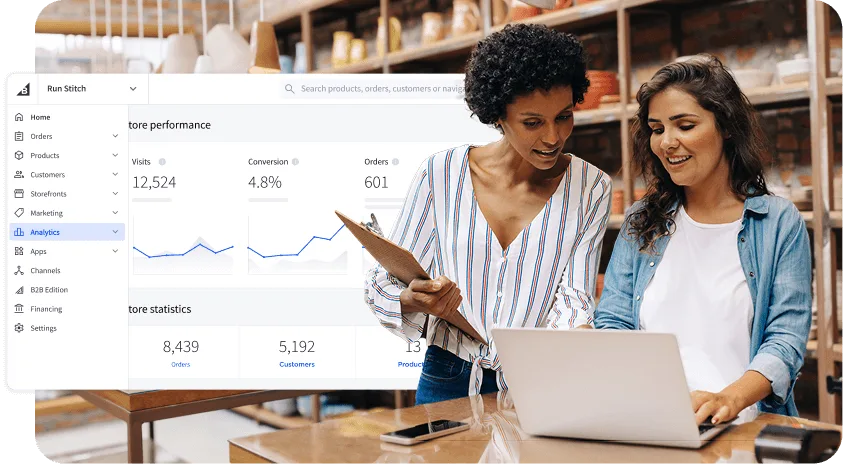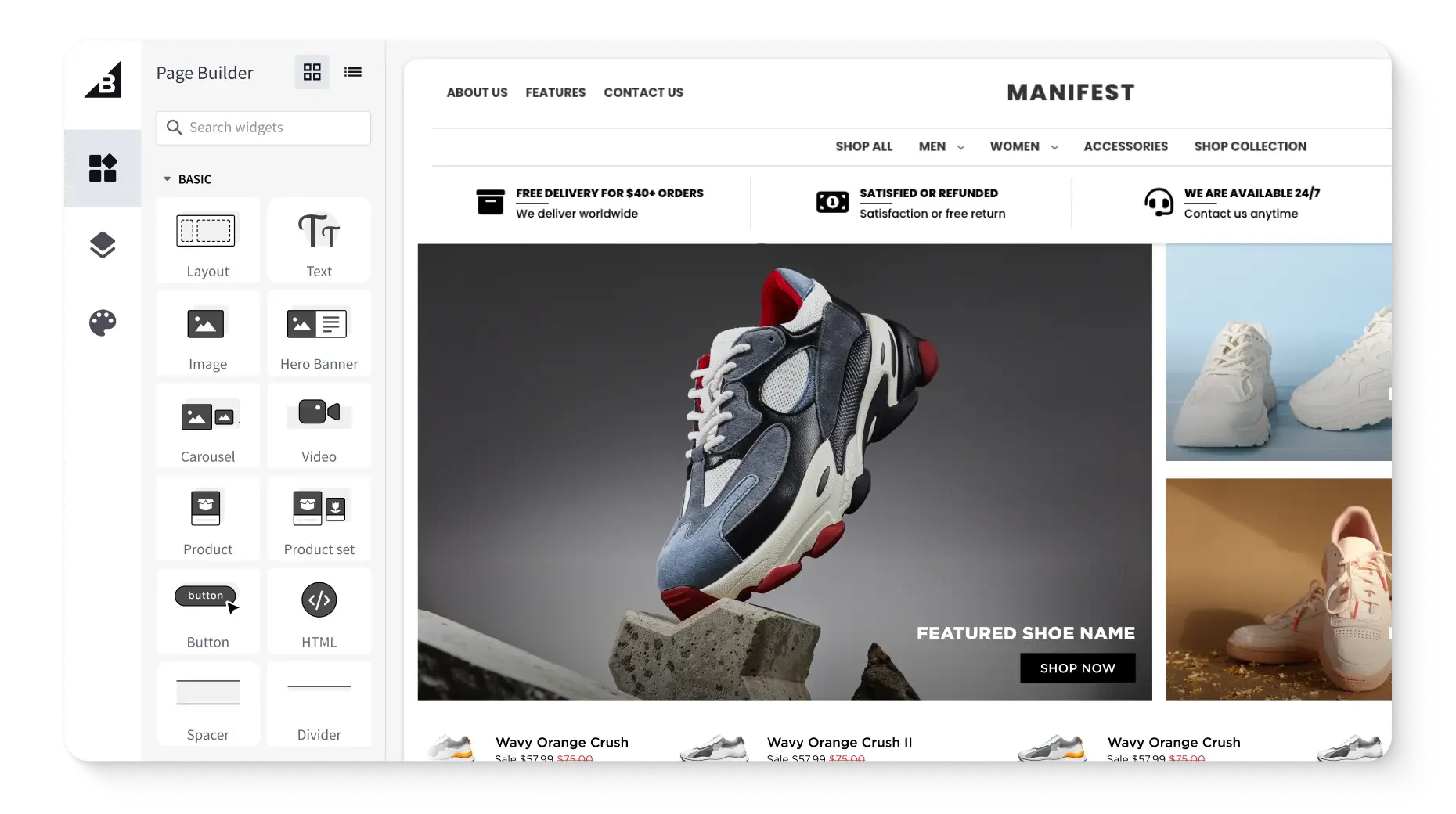Explore the
BigCommerce platform
Get a demo of our platform to see if we’re the right fit for your business.
Not ready for a demo? Start a free trial
The Truth About Dropshipping: The Good, the Bad and the Misunderstood

Written by
Haylee Clark11/25/2025


The Truth About Dropshipping: The Good, the Bad and the Misunderstood
Get The Print Version
Tired of scrolling? Download a PDF version of our dropshipping article for easier offline reading and sharing with coworkers.
A link to download the PDF will arrive in your inbox shortly.
Key highlights:
Dropshipping is not a get-rich-quick business model — expect low profit margins and high competition.
It is a powerful way to test new products, reach new regions, and protect inventory without upfront costs.
Success today comes from smart product selection, reliable dropshipping suppliers, and strong customer experience.
Automation tools, AI tools, and ecommerce platforms like BigCommerce can streamline order fulfillment and reduce manual workload.
Use dropshipping to complement (not replace) your core business — especially when scaling an existing online store.
Dropshipping has earned a reputation — sometimes fair, often not.
Dropshipping is an ecommerce business model where you sell products without keeping inventory on hand. When a customer places an order, you pass it to a third-party supplier who handles fulfillment and ships the product directly to the customer.
It sounds simple. And, in many ways, it is simpler than stocking your own warehouse or managing complex inventory systems. But dropshipping works only when you understand both its strengths and its limitations.
It’s not a “press play and get rich” strategy that social media might make it seem. It requires intention, patience, and a realistic understanding of the economics behind it.
That said, dropshipping also gets an unnecessarily bad rap. Many established ecommerce brands — from apparel companies to niche home-goods retailers — use dropshipping in innovative ways: to test trending products, explore new regions, prevent overselling, or extend their catalog without taking on additional risk.
This guide lays out the honest realities of dropshipping today, along with strategies, supplier guidance, and FAQs to help you decide how (and whether) this business model fits into your ecommerce strategy.

Find your favorite features.
Explore all of the capabilities of the BigCommerce platform.
5 hard truths about dropshipping
Dropshipping can be incredibly effective, but only when you understand its limitations. These are the realities that often surprise beginners — and the ones experienced ecommerce operators learn to navigate.
1. Low profit margins.
Dropshipping’s biggest appeal is its low upfront cost. But that low cost comes with lower profit margins compared to holding your own inventory. Your wholesale price will already account for the supplier’s handling, storage, and fulfillment, leaving you with less room for markup.
For many businesses, the equation looks something like this: a roughly 20% margin paired with a roughly 2% conversion rate. It’s serviceable, but it demands volume. Advertising, paid ads, product photography, customer support, shipping costs, and search engine optimization (SEO) work all eat into what’s left.
The result? Dropshippers must work harder to generate the same profit that a traditional inventory-holding ecommerce store might achieve more easily. Smart pricing and differentiated customer experience become non-negotiable.
2. A highly competitive landscape.
Because it’s easy to start dropshipping, it’s also easy for thousands of other stores to sell the exact same products.
Your competitors may be seasoned sellers who leverage automation, optimized product listings, tighter margins, and established traffic sources. Marketplaces like Amazon and eBay often offer the same items — sometimes from the same suppliers — at aggressive prices.
This doesn’t mean you’re destined to be the cheapest seller. It does mean you’ll need a clear angle: faster shipping, niche product selection, a polished storefront, social media marketing, or a strong brand story. Today, shoppers buy from brands that feel trustworthy and memorable — not from whoever happens to list the product first.
If you want to stand out, identifying potential bestsellers early and building a brand around them can make a significant difference.
3. Limited control over product quality and fulfillment speed.
Here’s where the dropshipping business model can feel uncomfortable: You don’t control the supply chain in the same way you would if you stored and shipped your own products.
If a product arrives damaged or late, or if it looks nothing like the listing photos, the customer comes to you for answers — even though you didn’t pack or ship the order.
This is why reliable dropshipping suppliers matter just as much as the products themselves. Not every manufacturer delivers high-quality products, and inconsistencies can quickly become public-facing problems through reviews and social media.
If the supplier makes a mistake, you also carry the burden of managing refunds, replacements, and customer communication.
Before you offer a product, it’s worth ordering a sample, testing shipping speeds, and verifying accuracy in product descriptions. Think of it as quality assurance — just at a distance.
4. Potential legal and intellectual property risks.
Most suppliers are legitimate, but not all.
Some offer branded or trademarked items without authorization. Others mirror listings from well-known manufacturers and sell imitation products of questionable origin.
A solid Dropshipping Agreement Contract and basic supplier due diligence help protect your business. And if you plan to sell products that include logos, characters, or recognizable branding, make sure the supplier has the rights to distribute them. When in doubt, walk away.
5. Harder to build a brand.
Branding is one of the biggest competitive advantages in ecommerce. But when your packaging, shipping, and product experience all come from another company, it’s harder to create a cohesive, memorable brand.
Many dropshippers solve this by:
Picking a clearly defined niche
Customizing product listings to highlight quality and value
Adding branded collateral to shipment packaging (where suppliers allow it)
Investing in strong post-purchase communication
Developing social media content that builds community rather than pushing generic products
You may not control the unboxing experience, but you can control the relationship, positioning, and customer experience surrounding it — including keeping expectations clear during checkout so shoppers know exactly when and how their products will arrive.
How to use dropshipping strategically
Dropshipping shines when it’s used with intention — not as the foundation of your business, but as a smart extension of it. These approaches are where established brands see the greatest return.
1. Market research and product testing.
Dropshipping is one of the most efficient ways to test trending products or explore new categories without taking on risk.
Whether you want to see if your audience will buy pet accessories, home décor, or fitness gadgets, you can add a small number of dropshipping products to your storefront and measure demand in real time.
This approach helps:
Identify winning products before you stock them
Import products quickly and begin testing immediately
Estimate optimal price points
Reduce the cost of experimentation
Expand your store’s offering without guessing
When you find something that consistently sells, you can transition to wholesale inventory to improve profit margins.
2. Protection from overselling.
Inventory surprises happen. A product goes viral on TikTok, a holiday surge exceeds expectations, or a supplier shipment arrives late.
Dropshipping gives you a buffer. If you temporarily run out of stock, your dropshipping supplier can fulfill customer orders until your inventory replenishes. It keeps revenue flowing and fills gaps in your inventory management process without compromising customer satisfaction.
3. Smarter, more flexible shipping coverage.
Shipping costs are one of the biggest factors influencing profit margins. If certain regions are expensive, slow, or logistically difficult to serve from your own warehouse, dropshipping can fill the gaps.
Many brands use dropshipping to:
Serve remote or international regions
Pilot sales in new markets
Avoid expensive regional storage
Reduce shipping costs on heavy or bulky items
It’s a practical way to expand geographical reach without committing upfront to a new fulfillment center.
4. Offering high-maintenance or specialty products.
Some products are expensive or inconvenient to store in your own warehouse. Dropshipping allows you to offer these items without investing in special handling or storage.
What do we mean by high-maintenance products?
Large products: Some products take up so much space, their sales don’t make up the costs of the excessive storage room.
Heavy products: If a product’s weight makes it cost too much to ship, try dropshipping from a manufacturer or wholesaler.
Fragile products: These require special care when shipping. In these cases, the supplier or manufacturer might be better equipped to meet these requirements than you.
Valuables: High-value items like fine jewelry, antiques, etc., require additional security that not all warehouses can offer. Rather than risking theft, you could leave the storage to someone who can adequately protect them.
Special conditions: Maybe you want to sell items that need to be kept frozen, or materials sensitive to light. If your inventory needs special conditions, you may be better off dropshipping than storing it yourself.
5. Automation, AI tools, and modern ecommerce workflows.
Today’s dropshipping ecosystem looks very different from the early days of AliExpress importing. Automation helps you streamline almost every aspect of running a dropshipping store — from syncing product listings and real-time inventory to routing customer orders and managing returns.
AI tools can help optimize pricing, generate SEO-friendly descriptions, streamline support responses, and surface trending products worth testing.
With the right systems in place, dropshipping becomes significantly less manual — and far easier to scale.
How to choose the best dropshipping suppliers
Your suppliers are the backbone of your dropshipping business. The relationship you build with them directly affects product quality, customer satisfaction, and profit margins.
Strong suppliers typically communicate clearly, provide accurate inventory data, and fulfill orders consistently. When comparing options, pay attention to product quality, support responsiveness, shipping times, and transparency.
Supplier red flags include:
Vague business addresses
Unclear return policies
Extremely low wholesale prices
Stock photos that don’t look original
Slow, inconsistent communication (If you can’t get straightforward answers before you sign on, you likely won’t receive better service after)
It’s also worth asking whether suppliers support branded packaging, white-label products, or custom inserts — small touches that help you build a stronger identity even when you don’t control the shipping process.
The final word
Dropshipping isn’t perfect — and it’s certainly not effortless. But when used intentionally, it’s a valuable tool for entrepreneurs, small business owners, and established ecommerce brands.
It helps reduce startup costs, test new ideas, expand to new regions, and avoid carrying unnecessary inventory. Paired with automation, solid suppliers, and strong brand positioning, it can meaningfully support your broader ecommerce strategy.
Dropshipping alone won’t build a sustainable business. But dropshipping used smartly can help you build a more resilient, more flexible, and more profitable one.
Dropshipping FAQs
What is dropshipping and how does it work?
Dropshipping is an ecommerce fulfillment method where a third-party supplier ships products directly to customers after the customer places an order. You list the product at retail price, pay the supplier the wholesale price, and keep the difference as profit.
How do I incorporate dropshipping into my business?
Dropshipping can be a complement to a traditional online business model.
Assuming you already have an online presence in one or more stores, incorporating dropshipping is similar to launching any other new product, with a few distinctions.
Here’s a quick step-by-step guide:
Research what products would fit well with your strategy, market, and customer base.
Research how your competitors are selling the product, namely pricing.
Find the best supplier (see our checklist above).
Finalize a fulfillment process that works for both of you and incorporate it into your system. Depending on your sales management software, this could be easy or require ironing out some wrinkles.
List and promote your new product. Be sure to specify any special conditions, such as changes in shipping times or locations.
Is dropshipping legal?
Yes. The dropshipping model is fully legal.
Legal issues typically arise only when a supplier sells counterfeit or trademarked products without authorization. Choose reputable suppliers and use proper contracts.
What are the benefits of dropshipping?
There are at least five good reasons that almost any ecommerce retailer should consider dropshipping.
Minimizes startup risks
Lowers product costs
Lower storage and logistics costs
A broad product offering
Flexibility
Is dropshipping profitable?
Yes, it can be. Profit margins are lower than traditional retail, but a combination of strong traffic, optimized pricing, good suppliers, and a compelling customer experience can still make a dropshipping business profitable.
Do I need to register a business entity to dropship?
Yes — once you begin making consistent sales, you’ll need a legal business entity to work with payment providers and handle sales tax obligations properly.
Is dropshipping allowed on Amazon and eBay?
Yes. Both platforms allow dropshipping as long as you follow their rules, remain the seller of record, and use approved suppliers.
What are some dropshipping product ideas?
If you’re interested in dropshipping but don’t know where to start, here’s a list of product ideas for inspiration. We tried to only list auxiliary items that could fit the product range of any industry.
Novelty t-shirts
Funny coffee mugs
Motivational bookmarks
Inexpensive watches or jewelry
Marketing merchandise (shirts, bags, mugs, pens, etc., with your logo). These items also work well with print-on-demand services.
Can I brand or customize the packaging when dropshipping?
Some suppliers offer branded packaging, white labeling, or custom inserts. It’s not universal, but it’s becoming more common, especially with U.S. and EU-based suppliers.
How important is product photography if I don’t hold inventory?
Product photography is critical. It’s one of the strongest drivers of conversions, especially when multiple dropshippers are selling the same or similar items. Many sellers request samples, use mockups, or commission brand-specific product photos.
What are strategies to increase average order value (AOV) in a dropshipping store?
Bundled products, volume discounts, free shipping thresholds, and personalized recommendations are all effective ways to lift AOV — especially when you carry a wide range of complementary items.
Do dropshippers ship internationally?
It depends on the supplier. International shipping can include additional fees, customs processes, and longer delivery times, so always check your supplier’s policies before offering international fulfillment.

Get a free 15-day trial of BigCommerce.
No credit cards. No commitment. Explore at your own pace.


